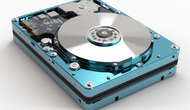Introduction
Hard disc drives are a critical component of any computing system. These devices store all of your important data and ensure that your system runs smoothly. The rotational speed of a hard disc drive is an important factor that impacts its performance. In this blog post, we will explore the rotational speed of HPE hard disc drives and its impact on system performance.
Rotational Speed and Data Transfer Rates
Rotational speed is measured in revolutions per minute (RPM) and is a key factor in determining the speed at which a hard disc drive can read and write data. HPE hard disc drives come in a range of RPMs, from 7200 RPM to 15,000 RPM. The higher the RPM, the faster the hard disc drive can read and write data. One of the key benefits of higher RPMs is faster data transfer rates. This is especially important for large files, such as video or image files, that require a lot of data to be read or written. A higher RPM means that the hard disc drive can read and write data faster, which translates into faster transfer speeds.
Rotational Speed and Access Times
Another benefit of higher RPMs is faster access times. Access time is the amount of time it takes for the hard disc drive to locate and retrieve data from a specific location on the disk. A higher RPM means that the disk is spinning faster, which in turn means that the hard disc drive can access data more quickly.
Drawbacks of Higher RPMs
However, higher RPMs also come with some drawbacks. First, higher RPMs mean that the hard disc drive is spinning faster, which generates more heat. This can be a problem in systems that have limited cooling capabilities, as excessive heat can lead to system instability and reduced hard disc drive lifespan. Another drawback of higher RPMs is increased power consumption. A hard disc drive spinning at a higher RPM requires more power to operate than one spinning at a lower RPM. This can be a concern for systems that are designed to be energy-efficient, as higher power consumption can impact the system's overall energy efficiency.
Conclusion
In conclusion, the rotational speed of HPE hard disc drives is an important factor that impacts system performance. Higher RPMs offer faster data transfer rates and access times, but come with some drawbacks, such as increased heat generation and power consumption. When selecting a hard disc drive, it is important to consider the system's requirements and choose a hard disc drive that offers the right balance of speed, reliability, and energy efficiency.






